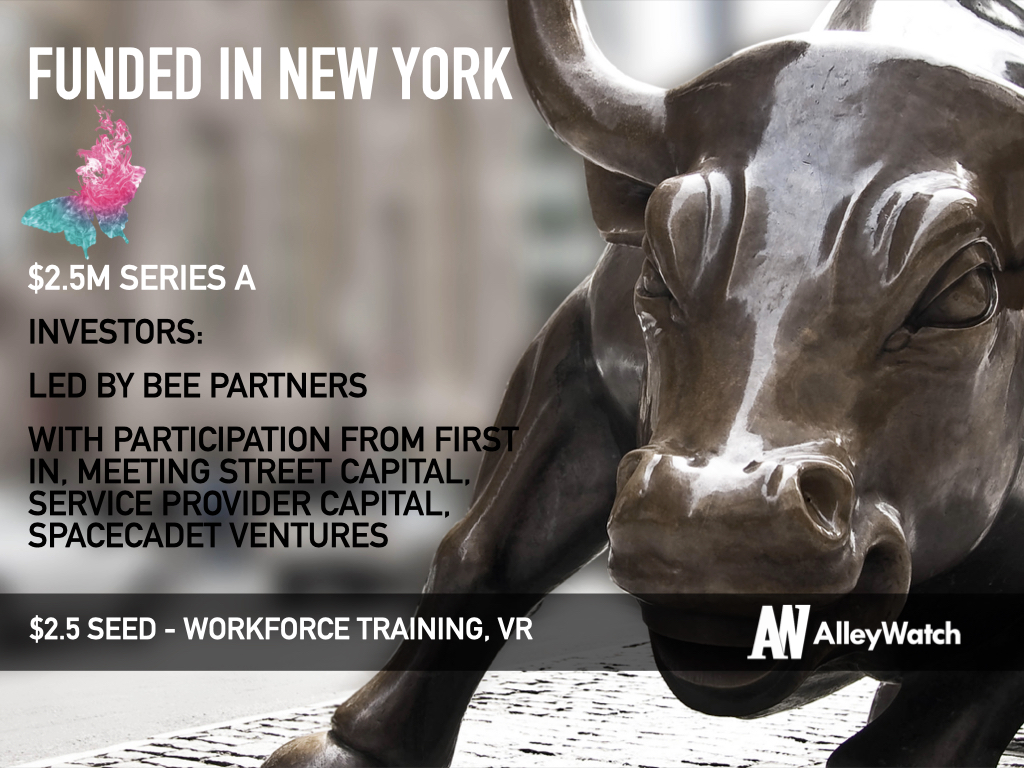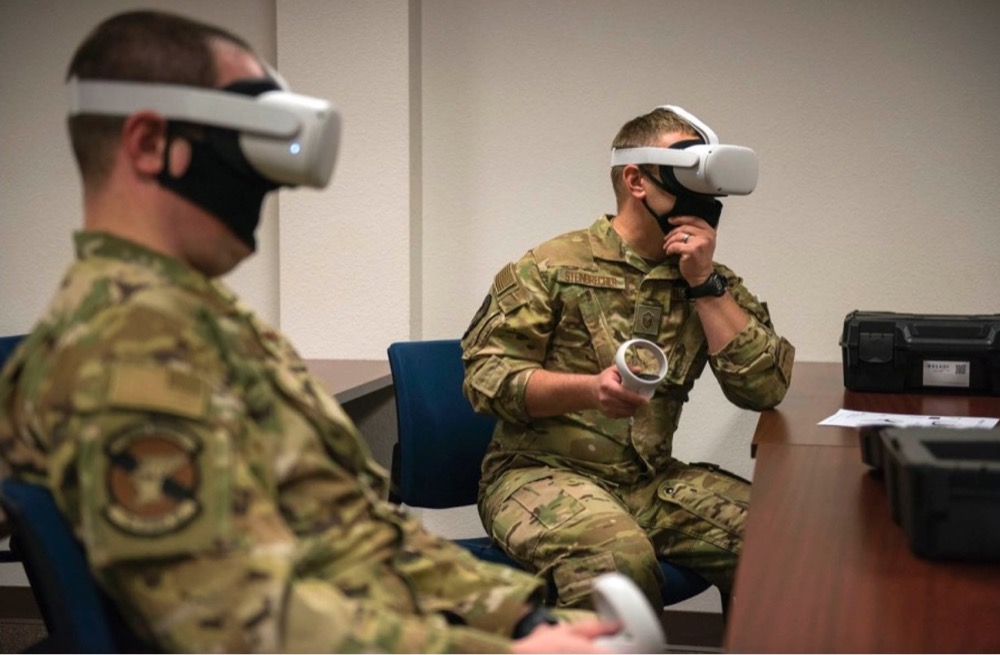The market for VR training is expected to surpass $294B globally by 2030. VR learning to train people is more cost-efficient and effective than training in classrooms and online learning. In a recent PWC study, VR learners completed training 4x faster than classroom learners; VR learners were 4x times more focused than online learners and 1.5x more than classroom learners. Moth+Flame is a specialist in providing immersive VR training for the public and private sectors. The company focuses both on soft and hard skills focusing on things like workforce programs for diversity and inclusion and suicide prevention through conversational and role-play simulations; physical training simulations include pilot training and aircraft maintenance training for military applications.
AlleyWatch caught up with Founder and CEO Kevin Cornish to learn more about how is time working with Taylor Swift inspired the business, the company’s strategic plans, recent round of funding, and much, much more.
Who were your investors and how much did you raise?
We raised $2.5M in seed funding. The round was led by Bee Partners, with additional investment from First In, Meeting Street Capital, Service Provider Capital, and Spacecadet.
Tell us about the product or service that Moth+Flame offers.
Moth+Flame is a leader in immersive training technology. Our unique SaaS-based software model makes immersive training easier and more effective for corporate and public sector clients.
We design content and training modules that make full use of the latest VR technology, powered by AI and natural language processing. Our training programs cover a wide range of topics, including:
Technical applications like pilot training and mechanical repair
- Workforce programs covering diversity, equity and inclusion training for HR departments
- Serious cultural issues like suicide and sexual assault prevention
Our ReadyVR Platform is an immersive competency-based technical and procedural training creating a safer and more skilled workforce. Our PromiseVR Platform features conversational and role-play simulations practiced in a virtual reality environment.
 What inspired the start of Moth+Flame?
What inspired the start of Moth+Flame?
I got my start in virtual reality working with Taylor Swift on an immersive experience for her tour. After that moment, I became obsessed with the medium — the intimacy between you and the characters in virtual reality is much deeper than traditional storytelling. I decided to channel my experience as a film director and producer to start Moth+Flame as an immersive content production company.
In 2018, Moth+Flame had the opportunity to work with Accenture on workplace training in virtual reality. It was through that project which altered the direction of our offerings to provide learning and training solutions and build the technology to do it better than ever.
How is Moth+Flame different?
We offer photorealistic and live-action imagery as part of our curriculum. Our users interact with other humans, rather than avatars — which makes for a much more impactful experience. Through our natural language processing features, participants respond to vocal cues — enabling the learners to actively engage with the scenario. The level of immersion and long-lasting emotional impact of Moth+Flame technology is truly a differentiator on the market today.
What market does Moth+Flame target and how big is it?
We target the corporate training market, which is estimated to be about $80B in the US and $370B worldwide. Our focus this year is offering learning solutions to corporations who have to train tens of thousands of employees across a variety of topics — from hard skills to cross training to nuanced soft skills like management, diversity and inclusion, and more. Our solution is adaptable to most training curriculum that was previously done in person or via the computer.
What’s your business model?
We operate under a SAAS model that allows customers to purchase off-the-shelf training software that is relevant to their workforce.
How has COVID-19 impacted the business??
COVID has certainly accelerated the uptake in virtual solutions like virtual reality. We have seen a lot of customer enthusiasm as HR departments are looking for flexible and effective training products for the workforce of the future.
What was the funding process like?
We saw a lot of enthusiasm from investors this year, especially from those who have previously been hesitant to fund VR companies. Many were surprised to see how far the technology has come in the last 24 months, not to mention excited about our strong business fundamentals. We are extremely fortunate to have the investors that we do.
What factors about your business led your investors to write the check?
We were able to demonstrate customer enthusiasm and loyalty with the products we have on the market today. Our superior visual effects and reliable natural language processing impress investors and customers alike. Finally, we have demonstrated strong growth in our monthly recurring revenue, which is an important selling point.
What are the milestones you plan to achieve in the next six months?
We’re going to continue to invest in our company to meet the demand we’re seeing right now in the corporate world. We are lucky to have a thriving business with the U.S. military, and will be investing in our private sector expansion. We’ll make several strategic hires in sales and development so we can continue to scale.
What advice can you offer companies in New York that do not have a fresh injection of capital in the bank?
We bootstrapped Moth+Flame for 6 years before taking any investment. This put us in a strong position to raise the capital when we needed it to scale. My advice is to always think critically about whether you need to raise capital or whether you can be strategic with your existing resources to build up a thriving business before you scale.
We bootstrapped Moth+Flame for 6 years before taking any investment. This put us in a strong position to raise the capital when we needed it to scale. My advice is to always think critically about whether you need to raise capital or whether you can be strategic with your existing resources to build up a thriving business before you scale.
Where do you see the company going now over the near term?
We plan to keep expanding into the private sector to meet the growing demand for this type of immersive training.
What’s your favorite outdoor dining restaurant in NYC?
La Mercerie is my favorite restaurant for brunch.






